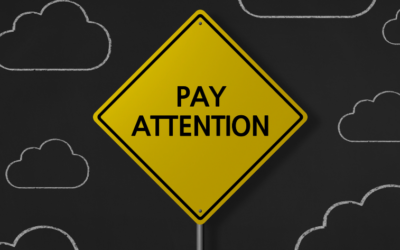In today's fast-paced work environment, miscommunication can significantly impede success. It can lead to a breakdown in team dynamics, hinder productivity, and even result in significant financial losses for businesses. Understanding the root causes of miscommunication and implementing effective corrective measures is crucial for any organization striving for optimal performance.
Understanding the Roots of Miscommunication
Effective communication involves speaking or writing clearly, actively listening, and understanding others' perspectives. However, several factors can contribute to miscommunication in the workplace.
One of the primary culprits is a lack of communication skills among employees. Many individuals struggle to concisely express their thoughts and ideas, leading to confusion and misunderstandings.
Differences in Communication Strength & Styles
For instance, imagine a scenario where a team member is tasked with presenting a project update to the rest of the team. However, their limited communication skills make them struggle to articulate their progress effectively. As a result, their colleagues may misinterpret the information, leading to a misalignment of expectations and potential delays in the project timeline.
Furthermore, differences in communication styles and cultural backgrounds can exacerbate miscommunication problems. Some team members prefer direct and straightforward communication, while others rely more on nonverbal cues or indirect forms of expression. These differences can result in messages being misinterpreted or overlooked.
Consider a situation where a team consists of members from various cultural backgrounds. One team member from a culture that values indirect communication may express disagreement with a project idea through subtle nonverbal cues. However, another team member accustomed to direct communication may completely miss these signals and continue with the plan, leading to tension and confusion within the team.
Organizational Barriers to Communication
In addition to individual factors, organizational barriers also play a significant role in miscommunication. Inefficient communication channels, a hierarchical structure discouraging open dialogue, and a lack of transparency can all contribute to misunderstandings and misinterpretations.
For example, imagine a company where communication primarily flows through a single email thread, making it difficult for employees to track essential updates or changes. This lack of efficient communication channels can lead to missed messages, overlooked information, and miscommunication among team members.
An organizational culture discouraging open dialogue and feedback can also hinder effective communication. Misunderstandings can quickly arise if employees hesitate to express their thoughts or concerns openly. This can be particularly problematic when giving and receiving feedback, as employees may struggle to communicate their suggestions or criticisms constructively.
Lastly, a lack of transparency within an organization can contribute to miscommunication. Employees who are not informed about important decisions, changes, or updates may rely on rumors or assumptions to fill in the gaps. This can lead to misunderstandings and confusion, as different individuals may interpret their limited information differently.
How Miscommunication Affects Team Dynamics and Results
The consequences of miscommunication within a team are far-reaching and can negatively impact both individuals and the organization. In a team setting, miscommunication can lead to frustration, mistrust, and conflict among team members. It erodes teamwork and collaboration, hindering problem-solving and decision-making processes.
Breakdowns in Synergy
One of the critical reasons why miscommunication can have such detrimental effects on team dynamics is the breakdown in understanding. When team members are not on the same page, aligning their efforts toward a common goal becomes difficult. This lack of clarity can create confusion and ambiguity, wasting time and effort.
Furthermore, miscommunication can significantly impede the achievement of business goals. It can result in missed deadlines, costly errors, and a decline in overall productivity. When team members do not clearly understand their roles or the expectations set for them, they may struggle to perform efficiently, leading to subpar results.
For example, imagine a project manager failing to communicate the project timeline to the team effectively. As a result, team members may not prioritize their tasks appropriately, leading to delays and missed deadlines. This affects the project's success and also creates a sense of frustration and disappointment among team members.
Hurting External Relationships
In addition to internal consequences, miscommunication can harm external relations with clients, customers, and other stakeholders. Misunderstandings can arise when messages are not effectively conveyed or understood, leading to dissatisfied customers or lost business opportunities.
Consider a situation where a sales team miscommunicates product features to potential clients. This can result in false expectations and disappointment when the product fails to meet the client's needs. As a result, the company's reputation may suffer, and future business opportunities may be lost.
It is crucial for teams to prioritize effective communication to avoid these negative consequences. This includes fostering an open and transparent communication culture, providing clear instructions and expectations, and actively listening to team members' concerns and feedback. By doing so, teams can enhance their dynamics, improve productivity, and achieve better results.
Common Scenarios Leading to Miscommunication
Miscommunication can occur in various scenarios within the workplace. One frequent situation is during meetings or presentations. A lack of clarity in the agenda or poorly organized discussions can confuse participants, leading to inefficient use of time and incomplete understanding of key takeaways.
Miscommunication in Meetings
During meetings, miscommunication can also arise from differences in communication styles. Some individuals may be more assertive and dominant, while others may be more reserved and passive. These differences can lead to misunderstandings, as assertive individuals may unintentionally overpower their quieter counterparts, leaving them feeling unheard and their ideas overlooked.
Distractions in the meeting environment can exacerbate miscommunication. For example, if the meeting room is noisy or if participants are multitasking on their devices, it becomes challenging to maintain focus and fully comprehend the information being shared. This can result in essential details being missed or misinterpreted.
Miscommunication in Emails
Email communication is another potential breeding ground for miscommunication. The absence of nonverbal cues and tone of voice makes it easy to misinterpret messages. Coupled with hasty email composition or incomplete information, misunderstandings can quickly arise.
In addition to these challenges, cultural differences can also play a role in miscommunication via email. Different cultures may have varying norms and expectations regarding communication styles, politeness, and directness. Messages can be misinterpreted without a clear understanding of these cultural nuances, leading to unintended conflicts or confusion.
Distorted Communication Funnels
Additionally, miscommunication often occurs when information is relayed through multiple channels or individuals. Each step in the communication process introduces the potential for distortion or misunderstanding, especially in large organizations. Clear and concise communication is crucial to avoid errors and ensure the accurate transmission of information.
In large organizations, miscommunication can be further exacerbated by hierarchical structures. Information may get filtered or diluted as it moves up and down the organizational ladder, leading to misinterpretation or incomplete understanding of messages. It is essential for leaders to establish open lines of communication and encourage feedback to minimize these issues.
Moreover, miscommunication can occur when individuals make assumptions about what others know or understand. This can happen when jargon or technical terms are used without proper explanation, confusing or excluding some recipients from the conversation. Taking the time to clarify and provide context can help prevent misunderstandings.
Furthermore, miscommunication can be influenced by individual biases and preconceptions. People may interpret information based on their beliefs, experiences, or expectations, leading to misunderstandings or misinterpretations.
Awareness of these biases and actively seeking clarification can help mitigate the impact of these factors.

Best Practices to Minimize Miscommunication
Miscommunication can lead to misunderstandings, delays, and even conflicts in the workplace. To ensure effective communication and avoid such issues, it is essential to implement best practices that promote clarity and understanding. Here are some strategies to minimize miscommunication:
Promote open communication:
Encourage a culture of open dialogue where employees feel comfortable voicing their opinions and concerns. This fosters a sense of trust and transparency and helps prevent misunderstandings. When individuals feel heard and valued, they are more likely to communicate their thoughts and ideas effectively. Organizations can address issues promptly and avoid potential miscommunication pitfalls by creating an environment that welcomes open communication.
Invest in communication skills training:
Providing employees with training programs to enhance their communication skills can significantly reduce miscommunication. Effective communication involves expressing oneself clearly, listening actively, and understanding others' perspectives.
Establish clear expectations:
Clearly defining roles, responsibilities, and project objectives is crucial to ensure everyone is on the same page. Miscommunication often arises when individuals have different interpretations of their tasks or goals.
Utilize multiple communication channels:
In the grand scheme, by implementing these best practices, organizations can foster a communication-rich environment that minimizes miscommunication and promotes collaboration, productivity, and overall success.
Ted Talk: 10 Ways to Have a Better Conversation
Celeste Headlee delves into the art of conversation in our modern age. Drawing from her experience as a radio host, Headlee shares practical tips to connect genuinely and converse effectively, emphasizing the importance of being present, open, and truly listening. This talk offers valuable lessons for anyone looking to enhance their communication skills in the workplace and daily life.
Key Takeaways to Avoid Miscommunication
Miscommunication in the workplace can have severe consequences, both for individual employees and the organization as a whole. By understanding the root causes of miscommunication, acknowledging its impact on team dynamics and results, and implementing effective corrective measures, businesses can mitigate the adverse effects and foster a transparent and efficient communication culture.
Investing in communication skills training, promoting open dialogue, establishing clear expectations, and utilizing multiple communication channels are all essential steps toward minimizing miscommunication and achieving optimal performance in the workplace.
Explore the Path to Success with CorEthos
Thank you for journeying with us through this exploration of ideas. Your presence here is a testament to a shared passion for reimagining business, and it resonates with the essence of CorEthos: bringing humanity back to business.
Perhaps the curiosity that brought you here still burns brightly, yearning for further discovery. In that case, we invite you to delve into our blog, where each article opens new doors to understanding, insight, and growth. They are tailored to leaders like you, eager to unravel the complex tapestry of today's business world.
If you find yourself intrigued by the delicate science behind communication and leadership, why not embark on a journey of discovery with our newsletter? Subscribing is like opening a treasure chest filled with wisdom that connects you to the essence of collaboration and community.
Intensify Your Leadership Journey with Our Mastermind Program
Our newly launched Mastermind Program provides a focused setting for tackling challenges like honing effectiveness, inspiring your team, and mastering the art of delegation. It's a unique space where business acumen meets human-centered values, delivered with the same quality and integrity you've come to expect from CorEthos. Ready to dive deeper into your leadership potential?
We Would Love to Get to Know Your Challenges Better!
Challenges in business? We see them not as stumbling blocks but as opportunities for transformation. Your unique path awaits, and it begins with a complimentary consultation with CorEthos. We'll build bridges over obstacles and forge a trail to success, leveraging our three foundational pillars.
Your adventure with CorEthos doesn't have to end here. Let's continue to build, learn, and grow together, reflecting on what makes your business uniquely human. We are here to be your compass, guiding you through the challenges and celebrating the triumphs. Let's begin this exciting journey today.



